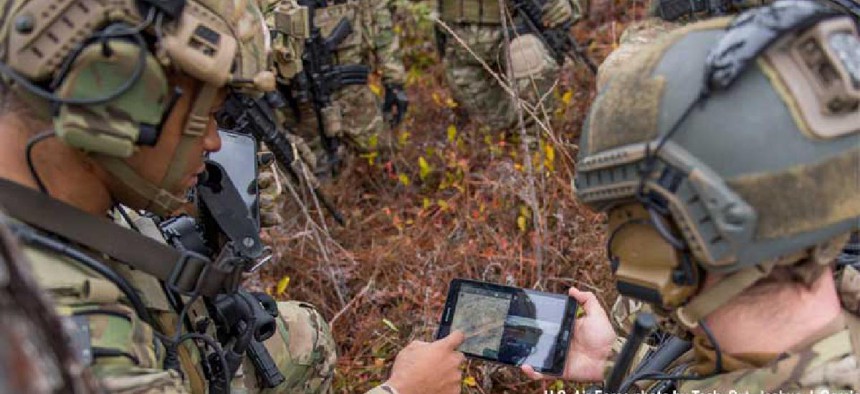Automated analytics for the tactical edge


Connecting state and local government leaders
To help soldiers quickly make sound decisions based on local information, the Special Operations Command is looking for technologies to speed the delivery of real-time analytics to warfighters in the field.
To help soldiers quickly make sound decisions based on local information, the Special Operations Command (SOCOM) is looking for technologies to speed the delivery of real-time analytics to warfighters in the field.
Although troops frequently collect raw data about their environment, the laborious and time-consuming job of integrating, analyzing and interpreting the data frequently belongs to analysts who sit far from the tactical edge. Too often, the result is stale intelligence.
As data sources multiply, the amount of data to be analyzed will grow exponentially and communicating in contested and denied environments will become increasingly difficult, exacerbating the problems of getting actionable intelligence to warfighters in real time.
To meet these challenges, SOCOM wants to leverage artificial intelligence running on edge computing platforms so special operations teams can easily distill mission-relevant information from operator-born sensor data. It’s looking for the same information it currently gets, but without having to depend on analysts “outside the tactical bubble,” according to a recent solicitation.
SOCOM is working with SOFWERX, an innovation hub dedicated to solving warfighter problems, to hold a series of events to identify technologies that can assist with automated analytics during Phase 0 of irregular warfare operations when pre-conflict diplomatic and operational preparations rely heavily on collecting and assessing information at the edge.
A tech sprint to be held late in the selection process features three scenarios demonstrating ways special operations force would use automated analytics. Selected participants might be asked to quickly build situational awareness about the social, cultural, economic and political sensitivities of a contested areas based on information from a Tactical Assault Kit that is not connected to the cloud. Another scenario involves building an app that returns social, cultural, economic and political sensitivities about a key local leader. Another calls for developing a sharable, annotatable app that automatically builds a gridded reference graphic of a neighborhood prior to a raid on a building.
Final deliverables will be demonstrated in mid-November.
NEXT STORY: Do you really understand AI?




